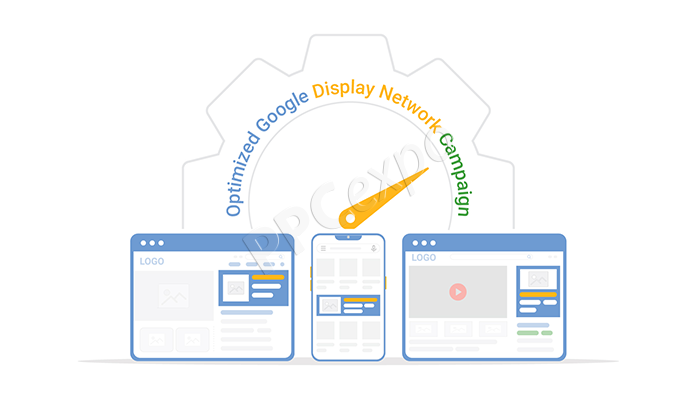In the world of digital marketing, businesses have a variety of tools at their disposal to promote their products or services. One of the most powerful and widely used tools is the Google Display Network (GDN). It offers businesses the chance to reach a vast audience through visual ads across millions of websites, videos, and apps. In this article, we’ll explore what Google Display Network is, how it works, and why it’s an essential platform for digital advertisers.
What is the Google Display Network?
The Google Display Network (GDN) is a collection of websites, apps, and videos that partner with Google to display ads. These ads can be in the form of text, image, or video and are shown to users while they browse the internet. GDN is part of Google’s broader advertising ecosystem, which also includes Google Search and YouTube.
What makes the Google Display Network so effective is its reach. It allows advertisers to show their ads on millions of websites, across different types of content and devices. Whether a user is reading news, watching a video, or browsing a shopping site, GDN helps businesses reach their target audience wherever they are.
How Does the Google Display Network Work?
GDN uses an automated process to match ads with relevant content. Here’s how it works:
- Advertiser Creates an Ad Campaign: To start, businesses set up an ad campaign through Google Ads (formerly known as Google AdWords). During this process, the advertiser chooses their target audience, ad format, and budget.
- Ad Placement and Bidding: Advertisers bid for ad space across the network. GDN uses a system known as real-time bidding (RTB), where advertisers place bids on where their ads will appear. The higher the bid, the more likely the ad will be shown.
- Targeting: One of the most powerful features of GDN is its targeting options. Advertisers can choose who sees their ads based on factors like location, demographics (age, gender), interests, behavior, and even the type of device in use. Google also uses its data from Google Search, YouTube, and Gmail to help businesses target users more effectively.
- Ad Delivery: Once the campaign is live, the ads are displayed on websites and apps within the Google Display Network. GDN continuously monitors user interactions with the ads, collecting data on which ads perform best.
- Analytics and Optimization: Through Google Ads, advertisers can access detailed performance reports. These reports show how well the ads are doing, including the number of impressions, clicks, and conversions. Advertisers can adjust their campaigns based on this data to improve results.
Why is Google Display Network Effective?
GDN offers a range of benefits that make it an attractive choice for advertisers looking to reach a large, targeted audience. Let’s take a look at some of the main reasons why it’s so effective.
1. Massive Reach
With millions of websites, apps, and videos in its network, the Google Display Network has a vast audience. Businesses can showcase their ads on well-known websites like The New York Times, YouTube, and Amazon, as well as thousands of smaller blogs and niche sites. This extensive reach helps businesses attract potential customers who may not have been actively searching for their products but are still interested in related content.
2. Advanced Targeting Options
Google Display Network offers advanced targeting features that enable advertisers to show their ads to the right people at the right time. Here are some of the targeting options available:
- Contextual Targeting: Ads are shown on websites that are relevant to the ad’s content. For example, an ad for running shoes might appear on a fitness blog.
- Demographic Targeting: Businesses can target users based on age, gender, and other demographic details.
- Interest-Based Targeting: Google tracks user interests based on their online activity, which helps businesses target users who are likely to be interested in their products.
- Remarketing: Remarketing allows businesses to target users who have previously visited their website but didn’t make a purchase. These users will see the ads again as they browse other websites, reminding them of the business.
3. Visual Appeal
Unlike text-based search ads, display ads are visually engaging. Advertisers can use eye-catching images, video clips, or interactive features to attract users’ attention. Studies have shown that visual ads tend to perform better when it comes to brand awareness and user engagement. Whether it’s a banner ad, a video ad, or a dynamic display ad, businesses can create ads that resonate with their target audience.
4. Cost-Effective Advertising
Google Display Network operates on a pay-per-click (PPC) or cost-per-thousand-impressions (CPM) model. Advertisers only pay when someone clicks on their ad or when their ad is shown to a specific number of users. This flexible pricing allows businesses of all sizes to set their budgets and control how much they spend on ads. It’s a cost-effective way to increase visibility, especially for businesses with limited budgets.
5. Measurable Results
One of the biggest advantages of advertising on the Google Display Network is the ability to track as well as measure performance. Google Ads provides detailed analytics, showing which ads are performing well and which need improvement. Businesses can track metrics such as impressions (how many times they show the ad), clicks (how many times users click the ad), and conversions (how many users take the desired action, such as making a purchase). This data allows advertisers to continuously optimize their campaigns for better results.
Types of Display Ads on GDN
The Google Display Network offers various types of display ads, which include:
- Text Ads: Simple, text-based ads that appear on websites.
- Image Ads: Static or animated banners that can include graphics and branding.
- Video Ads: Short video clips that can be shown on platforms like YouTube or other websites.
- Responsive Ads: Ads that automatically adjust their size, appearance, and format to fit different screen sizes and devices.
- Rich Media Ads: Interactive ads that allow users to engage with the content (e.g., by playing a video or taking a survey).
Conclusion

The Google Display Network is indeed an essential tool for businesses looking to increase brand awareness, drive traffic, and engage with potential customers. With its massive reach and advanced targeting options, GDN provides a great opportunity for businesses of all sizes. Additionally, its cost-effective pricing allows businesses to effectively reach a wide audience. By creating visually appealing ads and leveraging Google’s powerful targeting capabilities, businesses can create effective display ad campaigns that drive results and further improve ROI.
Frequently Asked Questions (FAQs)
1. What is Google Display Network (GDN)?
Google Display Network is a platform that allows businesses to display ads across millions of websites, apps, as well as videos.
2. How does Google Display Network work?
GDN works by using real-time bidding in order to show ads to targeted users based on their interests, demographics, and online behavior.
3. What are the benefits of using Google Display Network?
GDN offers massive reach, advanced targeting options, visual appeal, cost-effective advertising, and measurable results in order to enhance digital marketing efforts.
4. What types of ads does Google Display Network support?
GDN supports various ad formats, including text ads, image banners, video ads, responsive ads, and also rich media ads.


